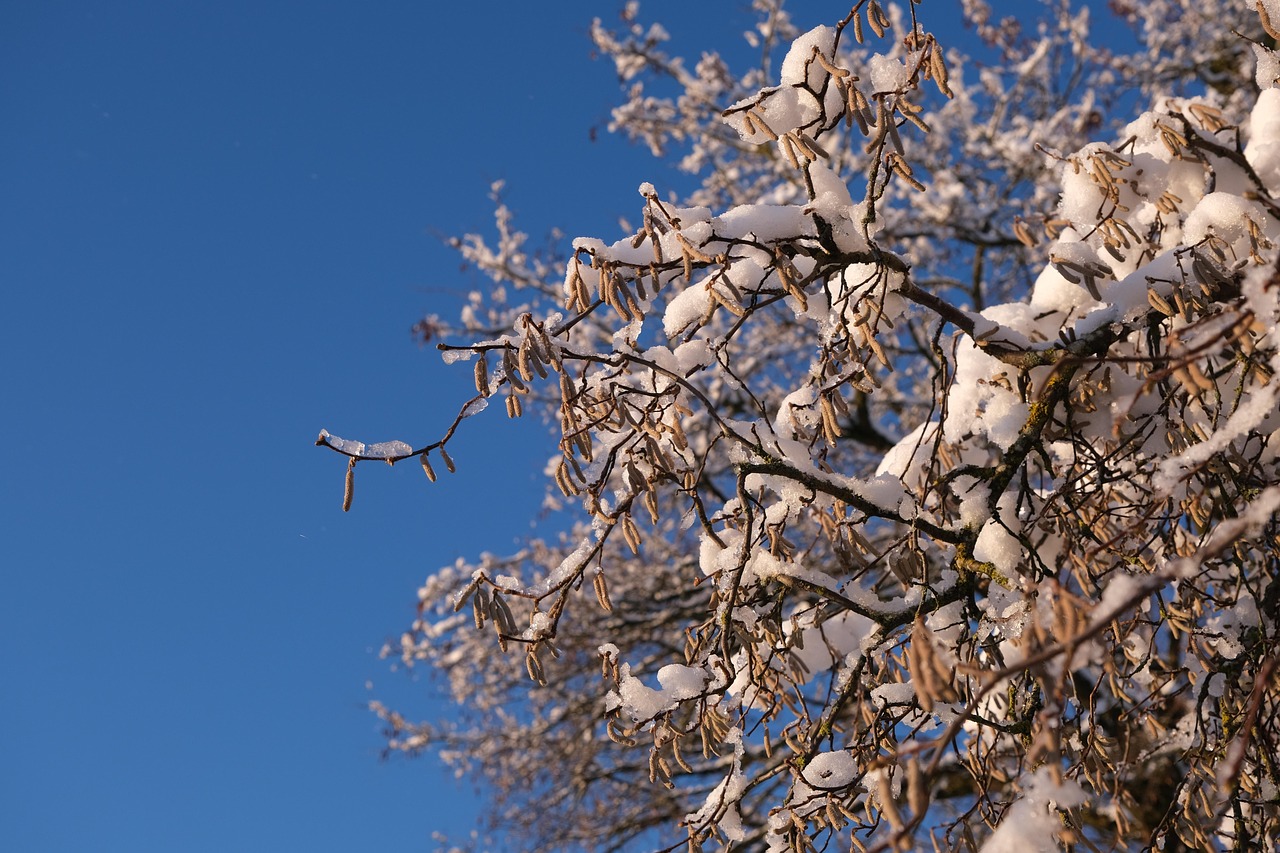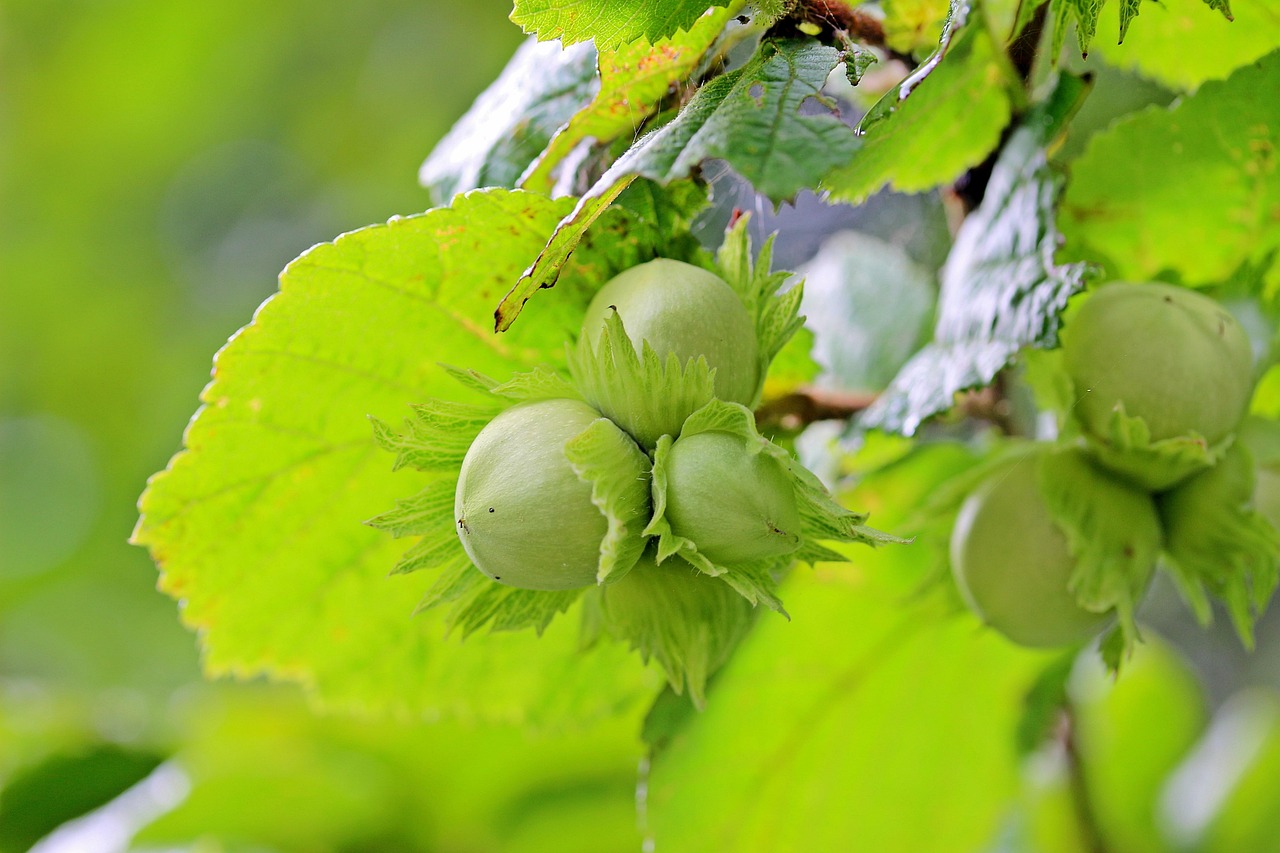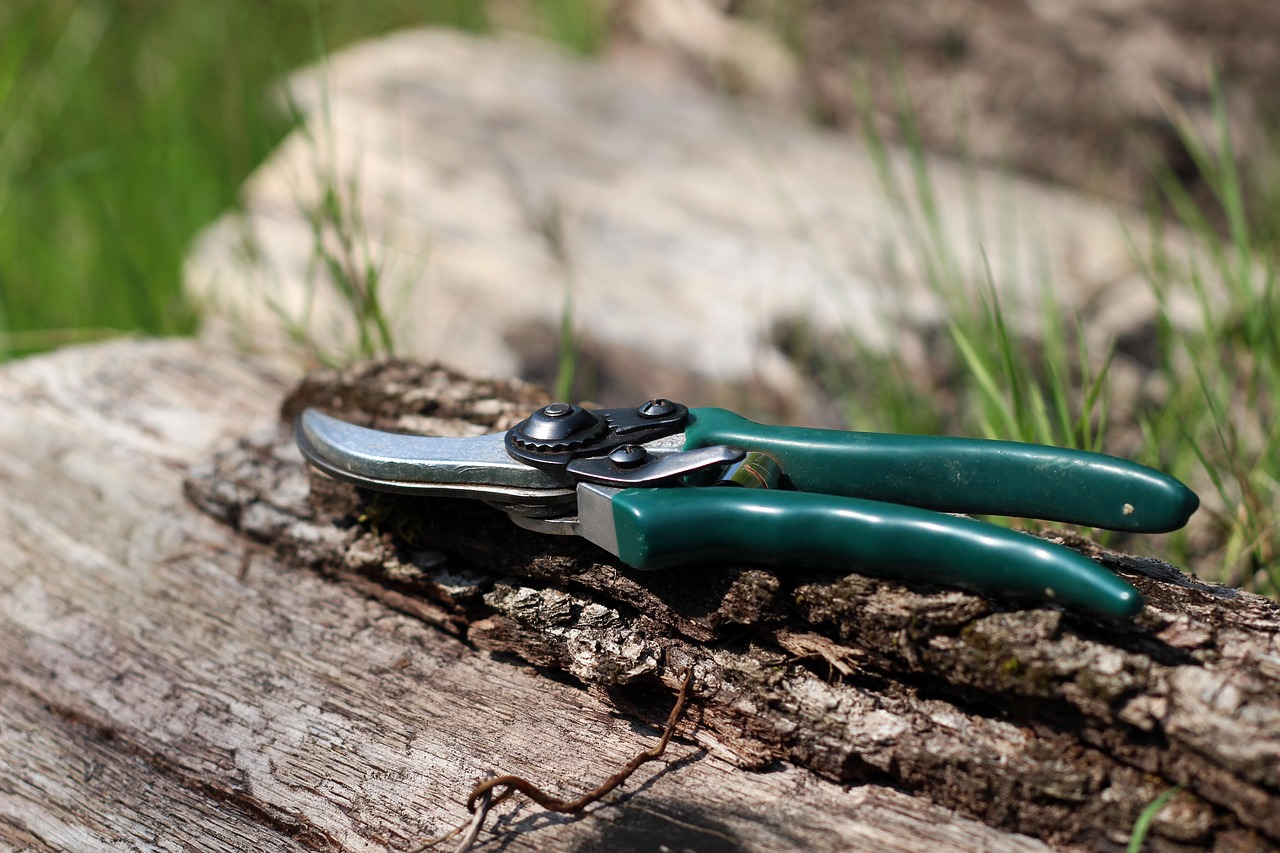Pruning hazelnut trees is essential for maintaining optimal spacing, promoting healthy growth, and enhancing fruit production. Proper pruning techniques ensure that trees receive adequate sunlight and air circulation while minimizing competition for nutrients.
Hazelnut trees are valued not only for their delicious nuts but also for their beautiful foliage. These trees can thrive in various climates, particularly in temperate regions. However, as they grow, proper care becomes necessary to ensure they remain productive and healthy. One of the most critical aspects of hazelnut tree management is pruning, which helps control their shape, size, and overall health.

Understanding the right time and method for pruning is vital for maximizing yields. Pruning affects not just the current year’s growth but also impacts future harvests. With optimal spacing achieved through correct pruning techniques, hazelnut trees can benefit from better light access and airflow. This enhances photosynthesis and reduces the risk of disease.
Importance of Pruning Hazelnut Trees
Pruning serves several purposes that are crucial for the health of hazelnut trees. Here are some key benefits:
- Improved Airflow: Pruning helps to thin out crowded branches. This allows for better air circulation, reducing the risk of fungal diseases.
- Enhanced Sunlight Exposure: By removing excess branches, sunlight can penetrate deeper into the tree. This promotes healthier leaf development.
- Nutrient Management: Pruning prevents overcrowding, ensuring that each branch receives adequate nutrients from the soil.
- Shape and Size Control: Regular pruning keeps trees manageable in size, making harvest easier and more efficient.
Moreover, understanding the appropriate spacing between trees during planting is equally important. Proper spacing ensures that each tree can grow without competing excessively with its neighbors for resources. This is particularly crucial as hazelnut trees can develop quite large if not managed properly.

Optimal Spacing for Hazelnut Trees
The recommended spacing for hazelnut trees varies depending on the variety and intended use. Generally, a spacing of 15 to 20 feet between trees is ideal. This distance allows each tree ample room to grow while reducing competition. Below is a table summarizing the recommended spacing based on different cultivation practices:
| Cultivation Practice | Recommended Spacing (Feet) |
|---|---|
| Commercial Nut Production | 15-20 |
| Ornamental Use | 10-15 |
| Home Gardens | 8-12 |
When establishing a hazelnut grove, proper planning regarding spacing is crucial. Trees planted too closely together will compete for resources, leading to weak growth and lower yields. It’s also essential to consider the mature size of the selected variety when determining spacing.
Best Practices for Pruning Hazelnut Trees
To achieve optimal results from pruning, follow these best practices:

- Timing: The best time to prune hazelnut trees is late winter or early spring before new growth begins. This timing minimizes stress on the trees.
- Tools: Use clean and sharp tools to make clean cuts. This reduces the risk of disease transmission.
- Remove Dead or Diseased Wood: Always start by removing any dead or damaged branches. This promotes overall tree health.
- Aim for a Well-Balanced Canopy: Focus on creating an open canopy that allows sunlight to penetrate while maintaining a balanced shape.
- Avoid Over-pruning: Too much pruning can harm trees. Aim to remove no more than 25% of the canopy in a single season.
Pruning is not merely about aesthetics; it directly affects the productivity of hazelnut trees. Each cut should be made with consideration of its impact on the entire tree structure.
In summary, understanding how to effectively prune hazelnut trees while maintaining optimal spacing is essential for healthy growth and high yields. As these trees mature, regular maintenance through thoughtful pruning will ensure they thrive for years to come.
Understanding the Growth Habits of Hazelnut Trees
Before diving deeper into pruning techniques, it’s crucial to understand the growth habits of hazelnut trees. These trees typically grow in a bush-like form, reaching heights of 10 to 20 feet, depending on the variety. Their growth patterns influence how and when to prune effectively.

Hazelnut trees produce multiple stems from the base, which can lead to a dense canopy if not managed correctly. This dense growth can cause competition for light and nutrients, making proper spacing and pruning essential. Here are some common characteristics of hazelnut tree growth:
- Multiple Stem Formation: Hazelnuts often develop several trunks, making it important to choose a primary leader during pruning.
- Fast Growth Rate: These trees can grow rapidly, especially in their early years. Regular pruning is necessary to keep them within desired height limits.
- Fruit Production: Hazelnut trees generally start producing nuts in their third to fifth year. Pruning at this stage helps maximize yields.
Techniques for Effective Pruning
Effective pruning techniques can significantly influence the health and productivity of hazelnut trees. Here are some fundamental approaches that growers should consider:
1. Heading Cuts
Heading cuts involve trimming back the ends of branches to promote bushier growth. This technique encourages lateral branching, which can be beneficial for fruit production. Here’s how to apply heading cuts:
- Identify the branch you want to shorten.
- Make a clean cut just above a bud that faces outward. This encourages new growth away from the center of the tree.
- Aim to cut back no more than one-third of the branch length.
2. Thinning Cuts
Thinning cuts remove entire branches back to their point of origin. This method opens up the canopy and improves air circulation. Follow these steps for effective thinning:
- Choose branches that are crossing or rubbing against each other.
- Use clean shears to cut back to the main stem or trunk.
- Avoid removing too many branches at once; space out thinning over several seasons if necessary.
3. Renewal Pruning
Renewal pruning focuses on removing older wood to stimulate new growth. This technique is particularly useful for maintaining high yields in mature trees. Steps include:
- Select older branches that are less productive.
- Cut these branches back to ground level or to a vigorous lateral shoot.
- This should be done gradually over several years to avoid shock.
Seasonal Considerations for Pruning
Timing is crucial when it comes to pruning hazelnut trees. Different seasons have varying impacts on tree health and growth. Here’s a breakdown of seasonal considerations:
| Season | Pruning Focus |
|---|---|
| Late Winter/Early Spring | Ideal for major pruning before new growth begins. Focus on shaping and thinning. |
| Summer | Light pruning can be done to remove any unwanted growth or suckers. |
| Fall | Avoid heavy pruning as it can stress the tree before winter dormancy. |
During late winter and early spring, trees are still dormant, making it the best time for significant cuts. Summer allows for minor adjustments without affecting overall growth. Fall pruning should be avoided, as it can leave trees vulnerable to winter damage.
Pest and Disease Management During Pruning
Pest and disease management is another critical aspect of maintaining healthy hazelnut trees through pruning. Here are some strategies to consider while caring for your trees:
- Inspect Regularly: Always check for signs of pests or diseases before and after pruning.
- Sterilize Tools: Use rubbing alcohol or a bleach solution to disinfect pruning tools between cuts, especially if you notice any infected branches.
- Remove Infected Material: Dispose of any diseased wood properly to prevent spreading pathogens.
- Monitor for Pests: Keep an eye out for common pests like aphids and caterpillars that may harm your trees.
By incorporating pest and disease management into your pruning routine, you can protect the health of your hazelnut trees, ensuring they remain productive for many seasons.
The next section will delve deeper into specific challenges growers face when managing hazelnut trees and effective solutions to overcome these issues.
Challenges in Hazelnut Tree Management
Managing hazelnut trees comes with its set of challenges. Understanding these issues can help growers implement effective solutions. Below are some common challenges faced by hazelnut tree cultivators:
Pest Infestations
Pests can severely impact the health and yield of hazelnut trees. Common pests include:
- Aphids: These small insects suck sap from new growth, weakening the tree and potentially leading to stunted growth.
- Caterpillars: Various caterpillar species may feed on leaves and young nuts, causing damage.
- Spider Mites: They thrive in hot, dry conditions and can cause leaf discoloration and defoliation.
Regular monitoring and early intervention are key to managing these pests. Implementing integrated pest management (IPM) strategies can be effective. This includes using natural predators, insecticidal soaps, or organic treatments.
Diseases Affecting Hazelnut Trees
Several diseases can threaten hazelnut trees. Understanding these can aid in prevention and treatment:
- Eastern Filbert Blight: Caused by a fungus, this disease leads to cankers on branches and can ultimately kill the tree if not managed.
- Corylus Root Rot: This disease affects the roots, leading to nutrient uptake issues and tree decline.
- Bacterial Blight: Symptoms include leaf spots and wilting, which can severely reduce yield.
To combat these diseases, ensure proper sanitation practices. Removing infected branches and maintaining good airflow around trees can help prevent outbreaks.
Environmental Factors Impacting Growth
The growth and productivity of hazelnut trees can be influenced by various environmental factors. Understanding these factors can help growers adjust their care practices accordingly.
Soil Quality
Soil plays a vital role in the health of hazelnut trees. Here are some key aspects to consider:
- Nutrient Levels: Hazelnuts thrive in nutrient-rich soils. A soil test can determine nutrient deficiencies that need addressing.
- pH Levels: Ideal soil pH for hazelnuts is between 6.0 and 7.0. Adjustments may be necessary if levels are too high or low.
- Drainage: Good drainage is essential to prevent root rot. Heavy clay soils may require amendments to improve drainage.
Climate Conditions
The climate in which hazelnut trees are grown significantly impacts their growth. Key climate considerations include:
- Temperature: Hazelnuts prefer temperate climates. Extreme temperatures can affect flowering and nut set.
- Rainfall: Adequate rainfall is crucial during the growing season. However, excess moisture can lead to root diseases.
- Wind Exposure: Strong winds can damage branches and reduce yields. Windbreaks may be necessary in exposed areas.
Proper Water Management
Water management is crucial for the growth and health of hazelnut trees. Both overwatering and underwatering can lead to significant issues:
Irrigation Practices
Irrigation should be tailored to the specific needs of hazelnut trees. Consider the following practices:
- Drip Irrigation: This method provides consistent moisture directly to the roots while minimizing water waste.
- Mulching: Applying mulch around the base of trees helps retain soil moisture and suppresses weeds.
- Monitoring Soil Moisture: Use moisture meters to determine when irrigation is needed, ensuring optimal watering schedules.
Signs of Water Stress
Recognizing the signs of water stress can help prevent damage to your trees. Look for:
- Wilting Leaves: Leaves that appear droopy or wilted indicate insufficient water.
- Leaf Discoloration: Yellowing leaves can signal both overwatering and underwatering issues.
- Poor Nut Development: Insufficient water during critical growth periods can lead to reduced nut size and quality.
Cultivar Selection for Optimal Growth
Selecting the right cultivar is essential for successful hazelnut production. Different cultivars exhibit varying levels of resistance to pests and diseases, as well as differences in yield potential. Here are some considerations when choosing a cultivar:
- Disease Resistance: Opt for cultivars that show resistance to prevalent diseases like Eastern Filbert Blight.
- Climate Adaptability: Choose varieties that thrive in your local climate conditions for optimal growth and yield.
- Nutritional Content: Some cultivars produce nuts with higher fat content or better flavor profiles, appealing to market demands.
The next section will explore advanced pruning techniques specifically designed for optimizing spacing and enhancing nut production in hazelnut trees.
Advanced Pruning Techniques for Optimal Spacing
To maximize the health and productivity of hazelnut trees, advanced pruning techniques can be employed. These methods not only enhance spacing but also improve nut quality and yield. Consider the following advanced techniques:
1. Espalier Pruning
Espalier pruning involves training the tree to grow flat against a support structure. This method is particularly effective for home gardens or small orchards where space is limited. Here’s how to implement it:
- Select a Strong Leader: Choose one main stem to train along the support.
- Use Ties: Secure branches to the support at the desired height and angles.
- Maintain Shape: Regularly prune side shoots to maintain the desired flat shape.
This technique allows for better light exposure and airflow while keeping trees within a manageable size.
2. Candelabra Pruning
Candelabra pruning creates a unique structure that mimics a candelabra shape, promoting multiple main branches. This method can enhance nut production by allowing better sunlight penetration throughout the tree. Steps include:
- Choose a central leader and select 2-4 main branches to act as the “arms.”
- Prune back these branches to encourage lateral growth.
- Remove competing shoots to maintain the desired structure.
This structure not only looks attractive but also supports optimal fruiting conditions.
3. Layering Technique
Layering involves inducing new roots on branches while they are still attached to the parent tree. This technique can help propagate desirable cultivars while maintaining spacing. Here’s how to layer:
- Select a Healthy Branch: Choose a low-growing branch that can easily reach the ground.
- Wound the Bark: Make a small cut in the bark to encourage rooting.
- Cover with Soil: Bury the wounded section under soil, leaving the tip exposed.
After several months, roots will develop, and the new plant can be severed from the parent tree.
Enhancing Nut Production Through Pruning
Effective pruning practices can greatly enhance nut production in hazelnut trees. Here are some additional strategies to consider:
- Encourage New Growth: Focus on stimulating growth during the tree’s younger years through selective pruning.
- Manage Fruit Load: If a tree is overloaded with nuts, consider thinning them to improve overall quality.
- Monitor Tree Health: Regularly assess the tree’s health to ensure that pruning supports a robust fruiting cycle.
Creating and maintaining a balance between vegetative growth and reproductive capability is key to achieving high yields of quality nuts.
Final Thoughts
The art and science of hazelnut tree pruning are fundamental to achieving optimal spacing and maximizing nut production. By understanding growth habits, employing effective pruning techniques, and managing environmental factors, growers can ensure that their hazelnut trees thrive.
Key takeaways include recognizing the importance of timing in pruning, employing advanced methods for training trees, and selecting disease-resistant cultivars suited for local conditions. Regular inspections for pests and diseases will help maintain tree health, ensuring that they remain productive for years to come.
Investing time and effort into proper pruning practices not only enhances the aesthetics of hazelnut trees but also contributes significantly to their yield potential. As you implement these techniques, remember that patience and consistency are essential. With careful management, hazelnut trees can provide abundant rewards in both beauty and harvest, enriching any landscape or orchard setting.
